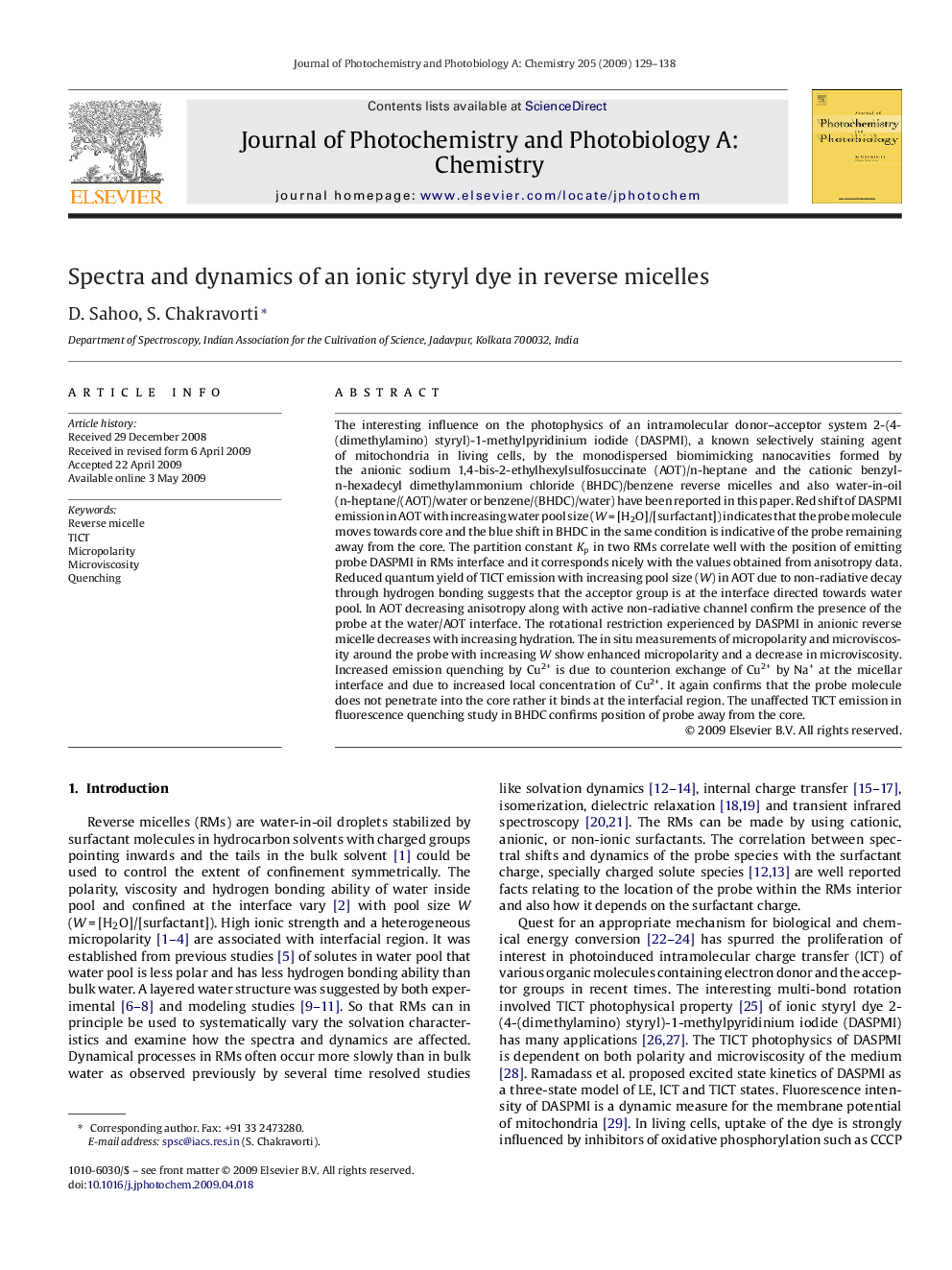| کد مقاله | کد نشریه | سال انتشار | مقاله انگلیسی | نسخه تمام متن |
|---|---|---|---|---|
| 27904 | 44049 | 2009 | 10 صفحه PDF | دانلود رایگان |

The interesting influence on the photophysics of an intramolecular donor–acceptor system 2-(4-(dimethylamino) styryl)-1-methylpyridinium iodide (DASPMI), a known selectively staining agent of mitochondria in living cells, by the monodispersed biomimicking nanocavities formed by the anionic sodium 1,4-bis-2-ethylhexylsulfosuccinate (AOT)/n-heptane and the cationic benzyl-n-hexadecyl dimethylammonium chloride (BHDC)/benzene reverse micelles and also water-in-oil (n-heptane/(AOT)/water or benzene/(BHDC)/water) have been reported in this paper. Red shift of DASPMI emission in AOT with increasing water pool size (W = [H2O]/[surfactant]) indicates that the probe molecule moves towards core and the blue shift in BHDC in the same condition is indicative of the probe remaining away from the core. The partition constant Kp in two RMs correlate well with the position of emitting probe DASPMI in RMs interface and it corresponds nicely with the values obtained from anisotropy data. Reduced quantum yield of TICT emission with increasing pool size (W) in AOT due to non-radiative decay through hydrogen bonding suggests that the acceptor group is at the interface directed towards water pool. In AOT decreasing anisotropy along with active non-radiative channel confirm the presence of the probe at the water/AOT interface. The rotational restriction experienced by DASPMI in anionic reverse micelle decreases with increasing hydration. The in situ measurements of micropolarity and microviscosity around the probe with increasing W show enhanced micropolarity and a decrease in microviscosity. Increased emission quenching by Cu2+ is due to counterion exchange of Cu2+ by Na+ at the micellar interface and due to increased local concentration of Cu2+. It again confirms that the probe molecule does not penetrate into the core rather it binds at the interfacial region. The unaffected TICT emission in fluorescence quenching study in BHDC confirms position of probe away from the core.
Journal: Journal of Photochemistry and Photobiology A: Chemistry - Volume 205, Issues 2–3, 25 June 2009, Pages 129–138